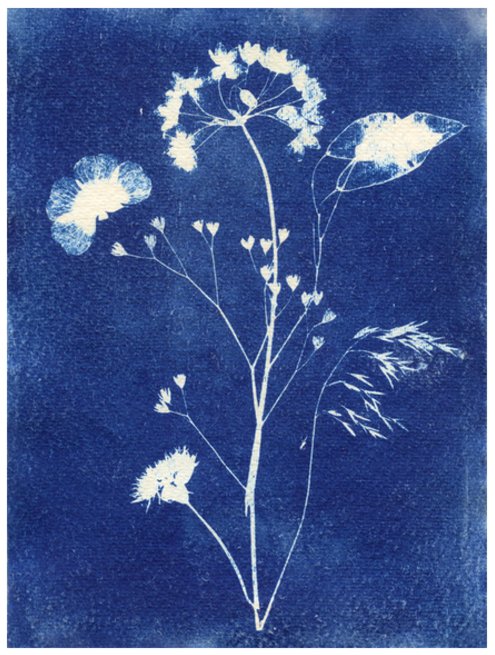The Art of The Process | Cyanotype Printing

Left: cyanotype flowers By Yaniv Alon. Center: Triplets by Rose Brancovich. Right: Still life flowers by Rose Brancovich.
In 1842, the English scientist and astronomer Sir John Herschel discovered the cyanotype printing process. By applying a mildly photosensitive solution to a receptive surface and allowing it to dry in a dark place, Herschel discovered that a cyan-blue contact print could be made when exposing the sensitized paper to a source of ultraviolet light. Engineers used Herschel’s process well into the 20th century as a cost-effective method for reproducing architectural plans, scientific diagrams and notes called blueprints. The process was essentially an early version of a photocopier.
A year after Herschel's discovery, his friend Anna Atkins used Herschel's cyanotype process to publish a book documenting her collection of native seaweeds. At the time, British Algæ was the first book to be illustrated by photography and the earliest sustained application of photography to science. To this day it is regarded as a landmark in publishing and photography.
Contemporary artists continue to be inspired by the cyanotype printing process, experimenting with its many applications. Read on to discover how several Artfully Walls artists have tweaked the process to create stunning works of their own.
“I developed a way of taking the traditional cyanotype process and altering the process so that instead of a normal blue and white print, I could get varied shades of blue, green, sometimes even yellow creeps in. Instead of the end goal of a very tidy and neat blue and white cyanotype, the end goal is a unique, completely imperfect print.”
“This is a part of a series of cyanotypes, which was one of the earliest photographic processes. Instead of using a negative or a photogram, I’ve used the cyanotype chemicals as paint, and then expose them to sunlight.”
“I got interested in the old techniques like indigo dyeing and sashiko stitching and after that the skills of cyanotype printing, which is a photographic print process from the 1800s.
Once you’ve fallen for the hues of blues there’s no way back.”
























